Databases
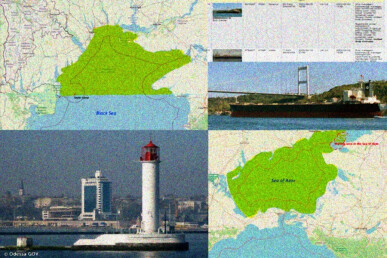
As of September 26, 2022, 60 of 100 vessels remain blocked in the ports of Ukraine/ Database
28 September 2022
As of February 24, 2022, 100 commercial vessels docked in the Ukrainian ports, not counting those of the occupied Crimea, all of which remained under the naval blockade by the Russian Federation. Of these 100, 34 belong to ship-owning companies from the EU countries, namely, 21— Greece and 24 — Turkey. As of September 26, 60 of the 100 vessels remain blocked: 29 – in the Mykolaiv region ports, 14 – in Kherson and 5 – in Mariupol. For various reasons, 12 of the 41 that were blocked on February 24, currently remain in the ports of the Odesa region.
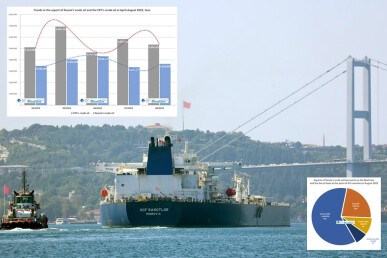
Сrude Oil Export from Russian Black and Azov Sea Ports in April-August 2022
19 September 2022
If in July 2022 the RF crude oil was imported from the Black and Azov seas to 7 EU countries, in August that number dropped to 4. Only Greece, the traditional leader of our ranking, almost doubled its imports that month raising its share in the Russian Black Sea-Azov crude oil EU imports from 34 to 61%. There have been no signs of any exports reorientation to India and China. Moreover, in August, for the first time since the beginning of the large-scale war, India actually reduced imports by 30.27%, or 266,875 tons, while China did not import a single ton of Russia’s Black Sea oil.
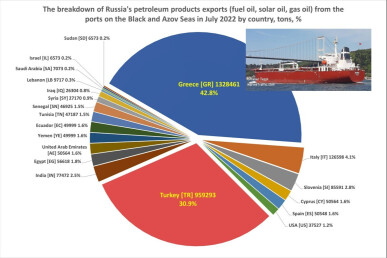
Exports of petroleum products (except crude oil) from Russia’s ports on the Black and Azov Seas in April-July 2022
16 August 2022
Since 24 February, when the escalation of the war began, the total volume of Russia’s petroleum products exports from the ports on the Black and Azov Seas (in contrast to the exports of crude oil) has hardly changed - it has remained at the level of 3 million tons per month. However, the structure of these exports has been changing radically since June-July 2022. From May to July 2022, the share of "EU+" countries in the imports of Russia’s petroleum products from the ports on the Black and Azov Seas decreased from 71.1% to 54.2%.
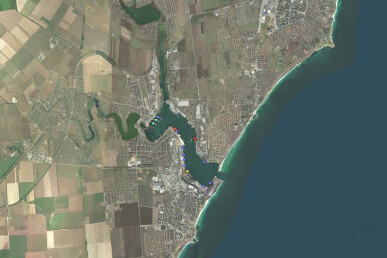
Blocked ships in Ukrainian ports during the war: The commercial sea port of Chornomorsk
31 July 2022
As of 24/02/2022, in the commercial sea port of Chornomorsk, in addition to port fleet vessels permanently based in Chornomorsk, there were 23 merchant ships. All of them have remained in port under blockade. Thus, out of 23 ships in the sea port of Chornomorsk, 6 belong to Turkish shipowners, 4 - to Ukrainian shipowners, 8 - to shipowners from the EU and the UK. Companies from Georgia, Japan, China, the UAE (in fact, Russia), and Liberia own one ship each.
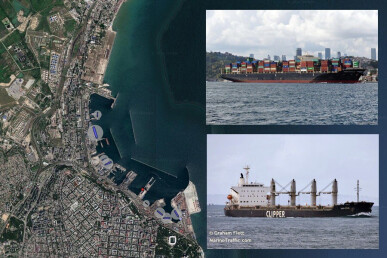
Blocked ships in Ukrainian ports during the war: The Odesa commercial sea port
27 July 2022
As of 24/02/2022, in the Odesa commercial sea port, in addition to port fleet vessels permanently based in Odesa, there were 9 merchant ships. All of them have remained in port under sea blockade. So, out of 9 ships in the sea port of Odesa, 2 belong to Turkish shipowners, 6 - to shipowners from EU countries - Germany and Greece, and one ship is owned by a company from Liberia.

Russian rhetoric in July 2022: Russia is threatening everyone, but in fact, it is seeking a ceasefire, truce with Ukraine, and negotiations with the USA. Why?
26 July 2022
The results of our regular monitoring of the rhetoric of Russia’s highest officials in July 2022 suggest that despite the intensification of their usual aggressive rhetoric, in reality, the Russian Federation is fervently seeking a ceasefire, truce, and negotiations. Why? It’s not only about Ukraine. Russia began a strategic shift towards the South and East - Asia and Africa. This shift will take time - both in politics and in the reorganisation of economic logistics. Moreover, Russia has also understood that there will be no lifting of sanctions. And in order to have this time, negotiations and a ceasefire are needed.

Warming up the audience: Kremlin speaker’s rhetoric indicates Russia is preparing to annex new Ukrainian territories
04 July 2022
In June 2022, Putin's speaker’s rhetoric on the absorption of Kherson region, Zaporizhzhia and Kharkiv regions has clearly intensified. We believe that the Russian Federation is already preparing to legally recognize the newly occupied areas with the goal of establishing control of the presently unoccupied areas of the Kherson, Zaporizhzhia and Kharkiv oblasts in the future.
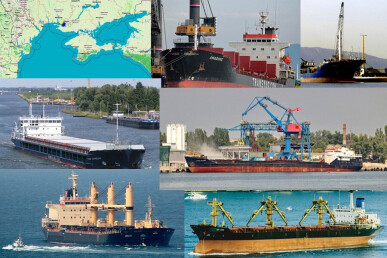
Blocked ships in Ukrainian ports during the war: The port of Kherson
24 June 2022
The Monitoring Group of the Black Sea Institute of Strategic Studies and BlackSeaNews wishes to bring to your attention a new series of articles about the fate of ships that were in Ukrainian ports on 24 February 2022, when Russia launched a full-scale invasion of many regions of Ukraine.

Russia's threats to strike at "decision-making centres": History, chronology, conclusions, and forecasts
17 June 2022
On 13 April 2022, the Russian Defence Ministry called “the strikes on Russian territories along the state border with Ukraine and sabotage operations in Russian border areas” the reason for striking at decision-making centres. Russian media immediately clarified: “It is not difficult to guess what decision-making centres we are talking about. This is the residence of the Commander-in-Chief of the Armed Forces of Ukraine, the Ministry of Defence, and the General Staff of the country.”
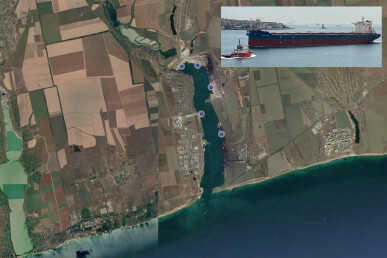
Blocked ships in Ukrainian ports during the war: the Pivdenny commercial sea port
11 May 2022
As of 24 February 2022, in the Pivdennyi commercial sea port (Yuzhne city, the Odesa region, Ukraine, international port code UA YUZ), in addition to port fleet vessels permanently based in the port, there were 9 merchant ships (See Table 1). All of them have remained in port under blockade. Thus, out of the 9 ships blocked in the Pivdennyi sea port, 6 belong to shipowners from EU countries, 3 - to shipowners from Japan.
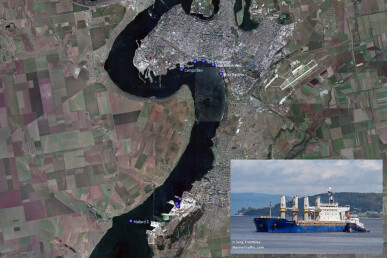
Ships blocked in Ukrainian ports during the war: The ports of the Mykolaiv region
10 April 2022
As of 24 February 2022, in the commercial sea ports of the Mykolaiv region (international port codes UA NLV MYKOLAIV, UA OCT OLVIA, UA NIKA TERA, UA DNB DNEPROBUGSKY), in addition to port fleet vessels permanently based there, there were 29 merchant ships (See Table 1). All of them have remained in port under blockade. Thus, out of the 29 ships blocked in the seaports of the Mykolaiv region as a result of Russia’s war against Ukraine, 13 belong to shipowners from EU+ countries and 16 - to shipowners from other countries.
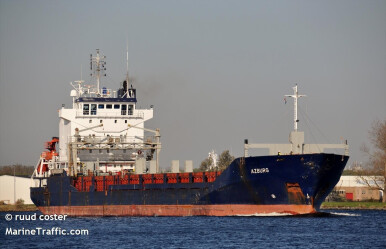
Blocked ships in Ukrainian ports during the war: The port of Mariupol
08 April 2022
The Monitoring Group of the Black Sea Institute of Strategic Studies and BlackSeaNews wishes to bring to your attention a new series of articles about the fate of ships that were in Ukrainian ports on 24 February 2022, when Russia launched a full-scale invasion of many regions of Ukraine.
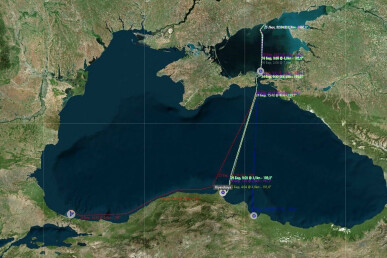
Blocked ships in Ukrainian ports during the war: The Berdiansk port
28 March 2022
The Monitoring Group of the Black Sea Institute of Strategic Studies and BlackSeaNews wishes to bring to your attention a new series of articles about the fate of ships that were in Ukrainian ports on 24 February 2022, when Russia launched a full-scale invasion of many regions of Ukraine. So, what is the fate of the ships that were at that time in the commercial seaport of Berdiansk?
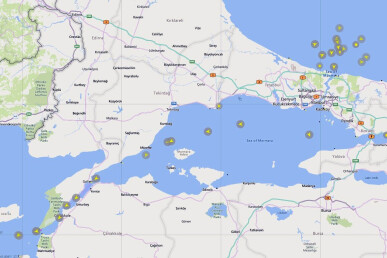
Blood-Soaked Export. The Database of Oil Tankers Exporting Russian Oil From the Black Sea (Upon Passing Through the Bosphorus and Dardanelles). Part 1: March-July 2022
15 March 2022
Blood-Soaked Export. The Database of Oil Tankers Exporting Russian Oil From the Black Sea (Upon Passing Through the Bosphorus and Dardanelles)
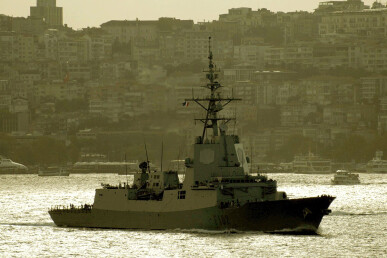
The Presence of NATO Non-Black Sea States’ Warships in the Black Sea in 2013-2021 / The Database
17 July 2021
The Monitoring Group of the Black Sea Institute of Strategic Studies and BlackSeaNews publishes the database «The Presence of NATO Non-Black Sea States’ Warships in the Black Sea in 2013-2021». Subsequent visits by NATO non-Black Sea states’ ships to the Black Sea will be added to this database.